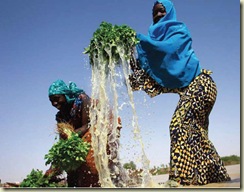Intervention in the water sector is needed because its access (and cleanliness) has direct relationship with poverty rates and poverty incidence. Here is a report (Water and the Rural Poor: Interventions for Improving Livelihoods in sub-Saharan Africa) from the FAO. This form of intervention works because it is context-specific and is a livelihood-centered approach to poverty reduction in rural areas. Experimentation with these kinds of programs have been usually successful.
The report argues that the likelihood of implementing successful interventions in the water sector varies according to the main sources of livelihood of rural populations, dictated in large part by the predominant farming systems, themselves closely related to agro-ecological conditions. Understanding the geographical distribution of the rural poor and their relation to livelihood zones therefore helps in designing intervention strategies to improve water management and increase both the resilience and productivity of agriculture, as well as agricultural incomes.
The report proposes a method for identifying the locations where water constraints are a major factor in determining poverty and where interventions can be made that would take large numbers of poor farmers out of poverty. It identifies and maps 13 major "livelihood zones" in SSA, each of which offers distinct opportunities for livelihood sustenance and development, has different agro-ecological conditions, and shows different angles for water-related investments for poverty reduction.
The report stresses that the choice of interventions at different scales should be taken from a non-prescriptive menu of appropriate options and based on an understanding of the particular context and target group.
The report concludes by discussing a set of typical water intervention options, and analyses their range of application and potential for poverty reduction according to the various livelihood zones. Six categories of possible interventions are discussed in view of their poverty-reduction potential:
- better management of soil moisture in rainfed areas
- investment in water harvesting and small storage
- small-scale community-based irrigation schemes
- improved water access and control for peri-urban agriculture
- development of water supply to meet multiple water uses
- an environmentally-aware system of improved water access for livestock in arid and semi-arid areas.
